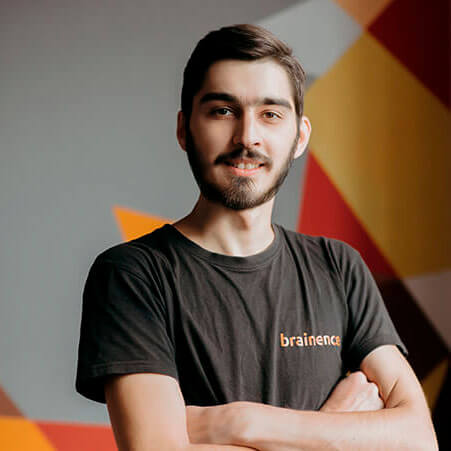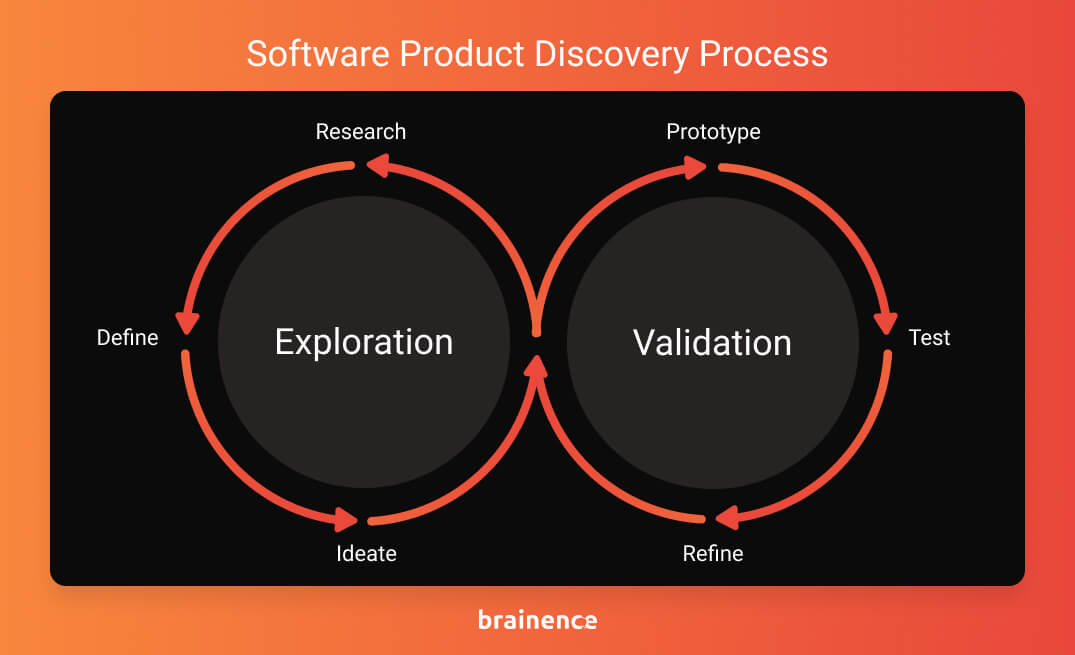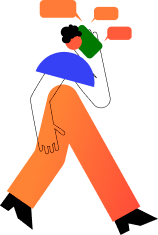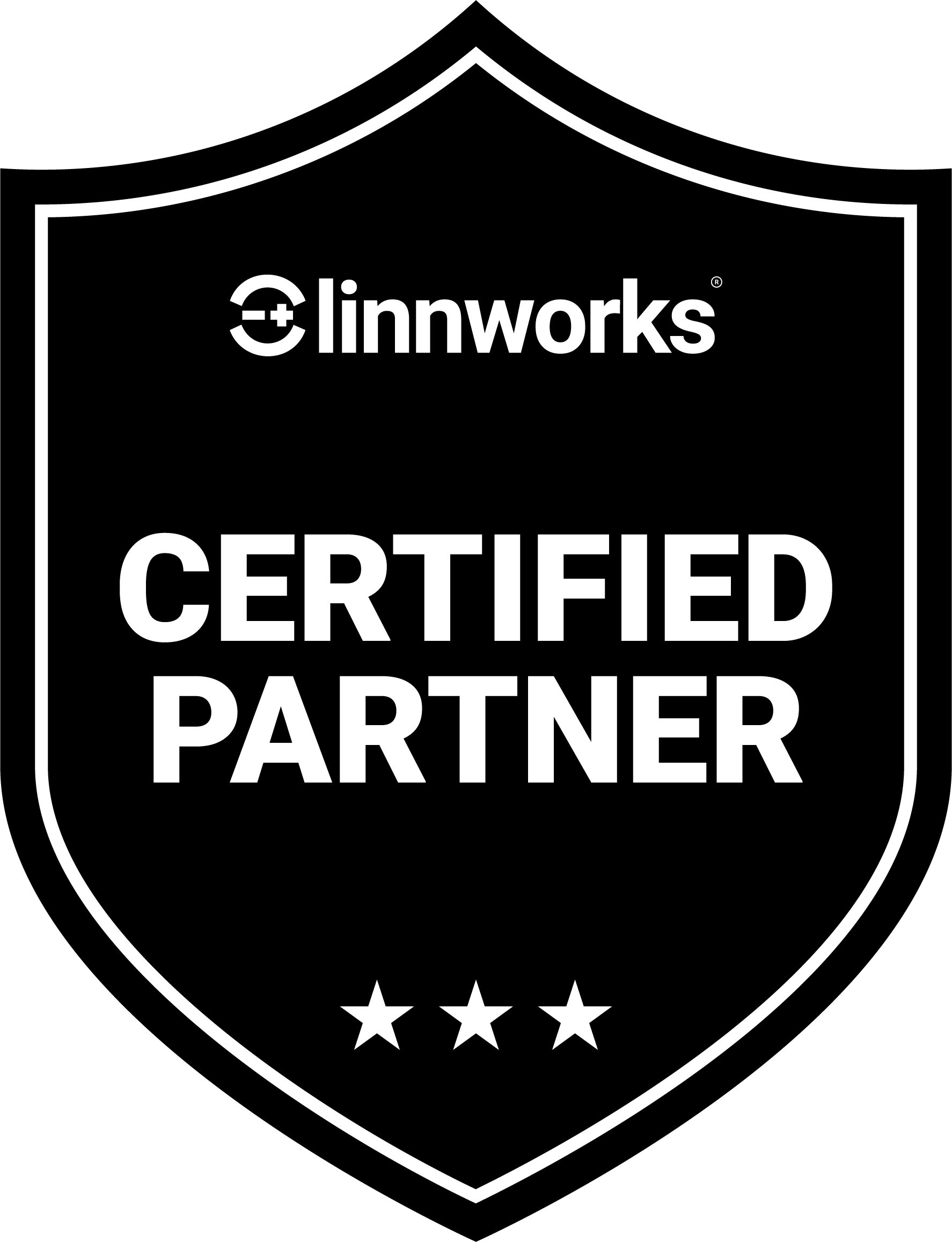2 June 2023
Practical guide to software product discovery process in 2024
We discuss the product discovery process to help you build the right product for the right audience.

Solutions
Author
|Contributor

Romanna Pastyrska
Writer
Ivan Dochynets
Co-founder, Chief Technical OfficerMore companies spend too much effort on development and exceeding an estimated cost. Software product discovery aims to find a solution to those challenges, helping to test the product before it hits the development stage.
A well-prepared and insightful product discovery is the most cost-effective way to ensure that your efforts will head in the right direction during development. The brilliant idea is not enough: you can discover the real value of the product only after you test it on the market. Product discovery does that for you, ensuring that your idea is valid and is built for the right audience.
To shed light on the topic, we sought the expertise of our Chief Technical Officer, Ivan Dochynets. With 10+ years of experience in software development, Ivan has been instrumental in shaping our company’s approach to the product discovery process.
In this guide, you’ll learn:
- What a product discovery is
- How to set up the product discovery process
- How to do product discovery in remote teams
- What to expect after conducting the product discovery
- How long does the product discovery process take to conduct and how much does it cost
What is software product discovery?
Software product discovery is the initial phase of the product development process where the focus is on determining the actual market demand for the solution you are planning to build and launch.
The product discovery stage ensures you build a product for the right audience, which removes uncertainty, and, if performed correctly, can save lots of time and effort due to development errors.
Different stages are designed to define business objectives, commercial viability, technological complexity, and product scope. The duration depends on the project’s complexity: the process can be completed within a few days for a small application and take up to a month for larger projects.
Even though self-conducted discovery can bring results, we suggest undergoing this phase with a trusted technology partner. Your ideas may evolve throughout the discovery phases with the help of a designer, business analyst, project manager, and other specialists who will work with you.
If you need assistance with your product discovery process, look no further. Brainence is a software development company with 6+ years of experience building products and empowering teams with tech talents. Contact us to discuss your software product discovery needs, and we’ll guide you through the next steps.
What are the product discovery phases?
The discovery process comprises two big activities: exploration and validation.
- Exploration involves various activities related to researching a product, communicating with stakeholders, and investigating existing problems, solutions, and customer pain points. This phase involves research, ideation, and evaluation, all aimed at gathering information and insights to inform the product development process.
- Validation aims at verifying the assumptions made during the exploration phase. It involves testing whether the ideas have the potential to deliver value to the end user before any actual product design takes place. This process relies on prototyping, testing, gathering feedback from customers, and data analysis to inform decision-making and learning from the results.

Exploration
Phase 1: Research
Generating and keeping an alignment across all levels is one of the most challenging yet necessary parts of the product discovery process. Creating clarity about the product discovery from the beginning will save you from misconceptions and help you see the results.
The product manager should contact you and other stakeholders to ensure that you have the same vision, align on the features and application the product should have, and discuss all necessary details to start the discovery.
Furthermore, this phase will build trust between specialists who work on the project as they will not need to interpret problems; rather, they will be listed clearly, which will get everybody on the same page, bringing the team together.
Phase 2: Define problems
You should start by defining the challenges your users face. Every effort around identifying a new product opportunity should start with the why, and the product’s success depends on whether it can solve the problem of your target audience.
UX research can be divided into the following categories:
Qualitative and quantitative
The quantitative type of research implies collecting information based on a large amount of data to analyze and build statistics related to target users. You can start by structuring customer feedback with tools like EnjoyHQ or Receptive.
As W. Edwards Deming once said, “Without data, you’re just another person with an opinion.”
Interviews and desirability studies are examples of qualitative research as they help to express emotional responses or impressions.
Exploratory research
This type of research allows us to discover the most important needs the users have, which are usually unmet. Exploratory research is useful as you can find the gaps in how existing products solve users’ problems. One of the ways to perform this research is conceptual testing which allows you to gather feedback on an approach before wireframes or prototypes are created. You can use a storyboard or comics as they increase engagement and help you gather user feedback on the process you intend to design.
Design research
Design research helps you develop and refine product ideas based on the user needs analysis. Methods such as usability testing and Rapid Iterative Testing and Evaluation (RITE) are employed to gather valuable insights during the design process.
The usability testing uncovers usability issues with a proposed interaction design. It involves 1-on-1 sessions with users where the researcher can observe how users interact with the website or an application.
RITE testing is a day or two of usability testing combined with a design cycle where the feedback is immediately injected into the design before the next round of testing. This method gives you an opportunity to have a more reliable design in real-time rather than a PowerPoint with a bunch of recommendations.
During the research phases, you should combine different methods for the same targeted audience. You can also adopt a framework or methodology to connect all the research insights effectively.
Phase 3: Ideate
Once you understand what issues your users face, it’s time to start thinking about ways to change the situation. The known brainstorming approach has limitations, as people are used to sticking to what they already know. When the group finds the first reasonable solution, everybody usually agrees and decides to roll with it. That’s not the goal of the ideation phase, as it rarely brings bright ideas.
To reach for the stars, you need to get yourself and the people you’re working with out of your comfort zone. We suggest you give individuals the time to think clearly, without limiting their ideas with time. Once you’ve collected enough ideas, you can choose the best one by voting. The process can become even more fun if you add some stickers and markers, handing them to colleagues when voting (or making similar interactions remotely).
Validation
Phase 4: Prototype
This phase does not imply shiny prototyping with a well-defined UI. Rather, it’s a way to test the ideas you came up with and validate them. You should focus on supporting the actions you want your users to take when they interact with your product. The prototype will most likely develop over time after several iterations, so do not try to make a perfect one from the first attempt. Focus on the user experience you want your future clients to have and consider how they will interact with the product effectively.
Phase 5: Test
With the new way of thinking for most companies, validation is critical to determine whether your ideas are worth spending time and effort on building the software product discovery and whether you’re moving in the right direction.
That’s when testing comes into play: you can use various methods, including interviews, surveys, A/B tests, and more. This phase is similar to the research phase, as it’s important to validate your idea from different angles. Before you run into the A/B testing, defining the difference between validation and experiment will not hurt.
Validation means testing the hypothesis or statement you have to provide evidence that the effort is worth the result received. An experiment, on the other hand, is a detailed study of a certain metric that you can use to receive the result you need. Hence, by validating ideas, you increase confidence in your ideas or discard them, ultimately bringing more clarity to the development process.
Phase 6: Refine
When you’ve validated your ideas, you can now align them with your company’s policy and internal process to ensure they are compliant to avoid any conflicts during the implementation phase. Then, those ideas can be broken into backlog tasks so you can later prioritize them.
However, as was mentioned earlier, product discovery is rarely linear, which means you could have come back to other phases by this time to rethink some ideas and validate them one more time.
Even though returning to previous phases may be frustrating, it will pay off in the long term, ensuring the minimum viable product development is successful.
Ensure a solid foundation for your product development
Our expert team will help you start off on the right foot with thorough research, prototyping, and testing.

Setting up the product discovery process
Before you start your discovery process, it is crucial to understand why you need to set it up and define timeframes.
Even though setting a deadline is not an option, you can define a timeframe in which your team can complete the process. As the Research, Define and Ideation stages are activities that involve collaboration with team members, you can schedule them in advance and book slots for the team. Also, remember that team members participate in different phases of the process, which is why it’s important to add them only to relevant events that require their involvement.
The most popular and effective way to set up the discovery process is to use the dual-track agile methodology that contains two separate tracks: discovery and delivery. While the discovery track focuses on producing, testing, and validating ideas, the delivery track takes those ideas and turns them into an actual product. This methodology forms a harmony between product, design, and engineering by working at the agile goals and UX design at the same time. When it comes to the product discovery process, it’s better to see it as a set of activities rather than a well-defined task with a strict deadline.
How to do product discovery in remote teams?
Remote work was ingrained into our lives and taken to a new level. These changes affect how teams operate, and it’s important to find best practices for the remote work environment to ensure that every team member understands what is needed from them.

We prepared useful practices your team should implement when working remotely to improve the product discovery process:
1. Have a well-defined direction
When the team can only assume in which direction the project is moving, it can harm all the processes. Sharing information with the team is not enough: your job is to ensure that every team member understands the process and contributes to it. You can go through the process at a meeting to ensure everyone is on the same page — this approach can save you lots of time and effort.
2. Prepare ideation sessions in advance
Picking up a reliable moderator and preparing the workspace will help you get the most out of the ideation session. Luckily, there is no need to reinvent the wheel — you can find numerous guidelines for setting up the process. The smooth run of the remote sessions is especially important when you involve non-product stakeholders.
Make collaboration easy and accessible
Every member should have access to the materials, especially visual representations. During the meetings, you can scribble ideas on the peace of paper or in the document without making it neat. However, you need to make editable documents and share them across the team, ensuring that everyone has access to it.
Software product discovery techniques
Using techniques during different phases of the discovery can help you gain more control over the entire process, which increases your chances of finishing the project on time. Here are several reliable techniques that should facilitate the process for you:
- Impact mapping. You can use this technique during the research, ideation, and validation stages. It will help you to structure it into one mind map that you can share with the entire team. You can also provide guidance, visualize ideation outcomes, and store the results of the ideation phase in one place.
- Mission briefing. This technique can be helpful during the alignment stage. The more you communicate the purpose of what you’re doing, the higher chances your product will succeed in the long run. You can perform mission briefings at the top management and team levels to ensure that everyone has a shared goal they’re reaching.
- Validation grid. When you validate your ideas, the validation grid will ensure you’re choosing the right testing methods in a certain situation. The validation process usually implies using different experiments; the results bring new insights that may force you to do new experiments again. This technique may give you more clarity on when you use usability testing or when you do not need testing at all.
What are the outcomes of a software product discovery?
At the end of the software product discovery process, you should be able to answer the following questions:
- What is the mission of your software project? What unique value does it bring to the market?
- Who is your target audience, and how can you best cater to their needs?
- What are the business metrics of your project’s success?
- What is your competition in the market?
- What features and interface do you want?
- What technologies should be used?
It’s better to run them with your team in advance to make sure everyone is on the same page when it comes to shared goals, features, and timeframes.
Identify and fix issues before product development
We’ll help you identify and address potential issues early on, ensuring a seamless development experience and a high-quality product.

What is the duration and cost of the product discovery phase?
The discovery phase is typically included in the project life cycle that is divided into five phases: initiation, planning, execution, monitoring, and closure.
Typically, it lasts for:
- 1-3 days for a small project
- 1-2 weeks for an average project
- 3-4 weeks for a large project
Keep in mind that these are approximate timeframes and the actual duration of the discovery phase for your minimum viable product development may vary greatly depending on your specific requirements, the complexity of the project, and the product scope.
When it comes to estimating costs, providing an exact figure upfront can be challenging. However, as a rough estimate, the cost for a typical product discovery phase can range from several thousand to tens of thousands of dollars.
To find out the cost of software product discovery for your project, drop us a line. Our development team will meet you for a free consultation to provide you with an accurate estimate tailored to your unique project needs.
Need a reliable software product discovery partner?
Brainence is a software development company with 6+ years of experience in conducting software product discovery and building powerful products based on research.
Prior to building a real product, our experts conduct a meticulous analysis and validation of your idea. With our software product discovery services, you’ll minimize risks, optimize costs, and prevent potential rework.
Contact us to discuss your software product discovery needs during a free consultation.
Contact us

The most impressive for me was the ability of the team to provide first-class development and meet all the deadlines.

The team proactively comes up with solutions and is eager to deliver high-quality development support.

I was blown away by the knowledge that Brainence has about web app development, UX and optimisation.

